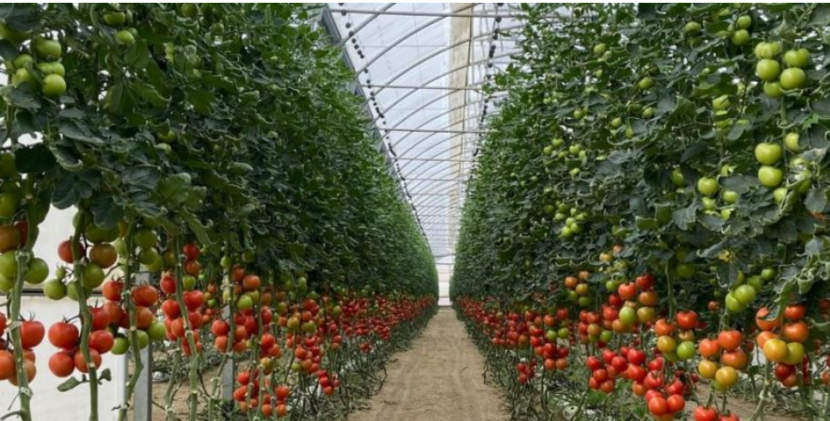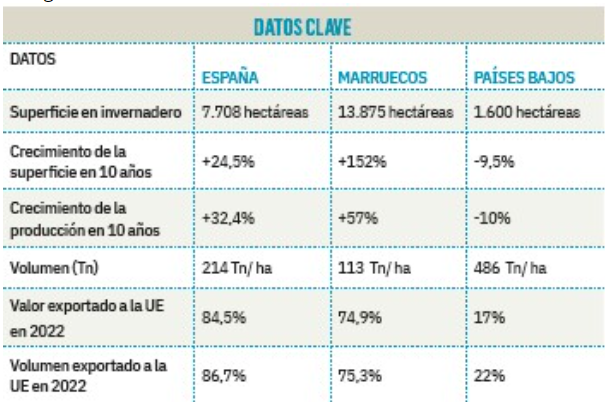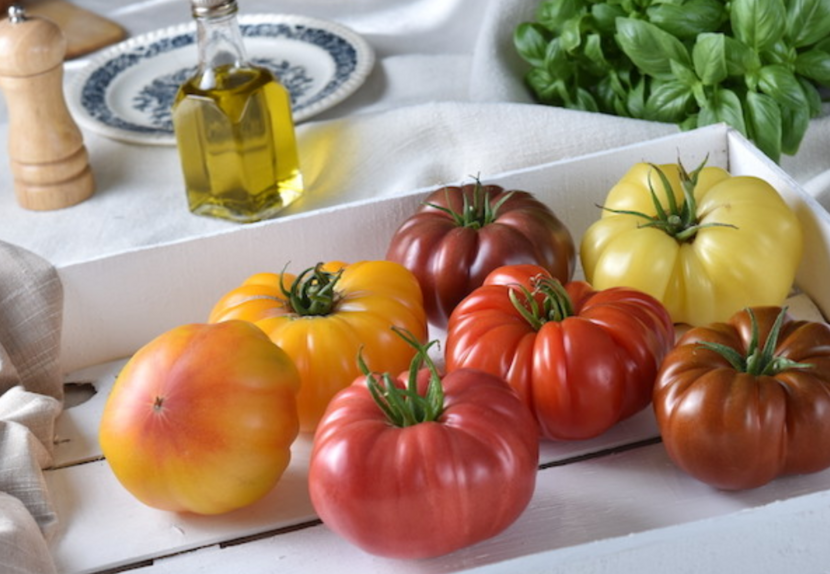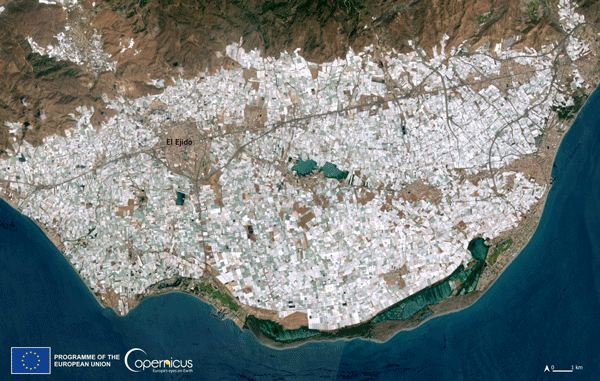The Netherlands
August 10, 2023
Morocco has overtaken the Netherlands and Spain as the leading supplier of tomatoes to the UK. Morocco has become the second largest supplier of tomatoes to the EU surpassing Italy. The Netherlands will regain its production capacity and level of competitiveness next season. The key to the survival of the Spanish sector is not to produce more, but to produce better.

To produce better in order to ensure profitability and customer loyalty. Spain’s growers advocate taking advantage of their proximity and reliability by signing agreements with plant breeders, marketing companies and retailers to sell products on an exclusive basis and put an end to market segmentation. So reads the concluding paragraph with which the Almería’s journalist, Elio Sancho, ends his recent article on the loss of competitiveness of the Spanish tomato sector.
Morocco is taking the lead
In recent years, the tomato crop has lost a large number of hectares of production in Spain. The main reason for this is the growing competition from Morocco, which is increasing its volume of exports to the EU, the main destination for Spanish tomato sales. Morocco has multiplied its area of greenhouse tomato. While ten years ago it had 5,500 hectares, today it has almost 14,000 hectares, i.e. in a decade it has almost tripled the extension of tomato greenhouses (Fig. 1).
 Fig. 1. Key data in tomato production in Spain, the Netherlands and Morocco
Fig. 1. Key data in tomato production in Spain, the Netherlands and Morocco
In 2022, the volume of tomato exported by Morocco to the EU stood at almost 75% of the total, the same as in value. Morocco exported 740,661 tons of tomatoes last year, of which 557,605 tons reached the European market. A decade ago its export capacity was 61.7% lower. Historically, by country, France is the leading buyer of Moroccan tomatoes, followed by the United Kingdom, Spain and Russia. However, since the invasion of Ukraine, the Netherlands has taken Russia's place, overtaking even Spain.
Another destination that was traditionally one of the most important for Spanish tomatoes, the United Kingdom, has been losing steam and, at present, Morocco has become the leader in tomato sales to the UK, even ahead of the Netherlands, the largest exporter so far. According to the latest data presented by Mr. Sancho, Morocco exported to the UK 82,499 tons up to July 2022, while the Netherlands 77,444 and Spain 41,231. The journalist contrasts these figures with the data recorded in 2017: Morocco exported 49,312 tons of tomatoes to UK; 175,924 Netherlands and 111,319 Spain.

EU-Morocco Association Agreement
Morocco has become the second largest supplier of tomatoes to the EU, even surpassing Italy. Spain continues to be the leading producer but is losing share at an alarming rate.
The prestigious expert in agricultural markets, Tomás García-Azcárate, explains one of the keys to the increased competition of Moroccan tomatoes against Spanish produce. He explains it as follows within the Association Agreement between the EU and Morocco: a third country can export, respecting the common tariff, all the products that are authorized to enter the common market. If it has signed a preferential agreement for some products, the EU grants it tariff reductions.
Regarding tomato imports from third countries, the main protection mechanism for the European producer is the reference price that the imported product must respect. This is the case, for example, with tomatoes from Turkey. As for Morocco, the main concession of the preferential agreement is a reduction of the reference price for a given quota. That is to say, Morocco exports its quota at a preferential price but, in addition, exports more tomatoes to the EU while respecting the normal reference price. Therefore, Morocco's exports exceed the quantities provided for in the quota because there is no quantitative limit on imports respecting the general conditions.
Entry prices for Moroccan tomatoes
European trade organizations have long being asking the European Commission to review its import regulations for tomatoes from Morocco, as growing imports of low-priced tomatoes are a concern for leading export nations like Spain and the Netherlands.
 Aerial view of vegetable production under plastic greenhouses in Almería
Aerial view of vegetable production under plastic greenhouses in Almería
For Mr. García-Azcárate, “ it is not true that more is imported than agreed, because there is no quantitative limit on imports that respect the general conditions, but what is happening is that the preferential price is out of date”. “ The reference price was set in the agreement that ended the Uruguay Round and was calculated in 1994. But it is a very difficult problem to solve because it would require a new agreement within the WTO, approved by unanimity, which is to say that it is impossible”.
However, the expert adds, "if the rate of increase in Moroccan tomato imports has accelerated over the last ten years, one wonders what has happened to bring this about". The answer is clear: ten years ago Brussels changed the method of calculating market prices for Moroccan tomatoes, an essential element for comparing them with the reference price. The change was made at Morocco's request and was a EU decision opposed by Spain and Italy. "It is appropriate to backtrack after assessing the negative consequences that this change has generated," García-Azcárate says. However, "it is not a politically simple solution given the strategic importance of Morocco in very relevant issues for the EU, such as the control of migratory flows or the containment of Islamic radicalism".
The Netherlands to recover its production capacity
In the current 2022/23 season, the tomato acreage in Spain has grown slightly, taking advantage of the decline recorded in the Netherlands due to the sharp increase in energy prices, especially. This increase in the number of tomato hectares grown under plastic (about 5,700 in Almería and around 2,000 in Murcia) has resulted in a profitable season for Spanish growers.
However, the general manager of Coexphal, the Almeria growers' organization, Luis M. Fernández, urges caution and acknowledges the uncertainty surrounding tomato in Spain in the future. He says that the Netherlands is going to recover its production capacity and its level of competitiveness in the next campaign because "they have practically solved the problems of energy cost overruns”. According to Coexphal estimates, the current season, “the Dutch have reduced their tomato area by just 2%, recording changes in its production schedule, which is what benefited the Spanish production”.
How to ensure the Spanish sector survival
To ensure the survival of the Spanish tomato, the sector "must continue to improve in quality and do it focused on service: being a reliable supplier, proactive and solving customer problems," Coexphal’s manager recommends. Mr. Fernández also advocates process automation to reduce costs and increase competitiveness. "We have to achieve a more professional workforce, with higher productivity”. Given the segmentation of the tomato Spanish market, he stresses the importance of promoting "agreements between plant breeders, marketing companies and retailers to sell products on an exclusive basis".
Sources: España resiste a la competencia marroquí y holandesa (revistamercados.com) ¿Cómo avanzar en la guerra del tomate? (revistamercados.com)
Mocht u interesse hebben in de Spaanse groenten- en fruitsector, dan is de volgende informatie wellicht ook interessant voor u: https://www.agroberichtenbuitenland.nl/landeninformatie/spanje/nieuws/2023/07/04/inschrijving-handelsmissie-hergebruik-reststromen-groenten-en-fruit-spanje-geopend